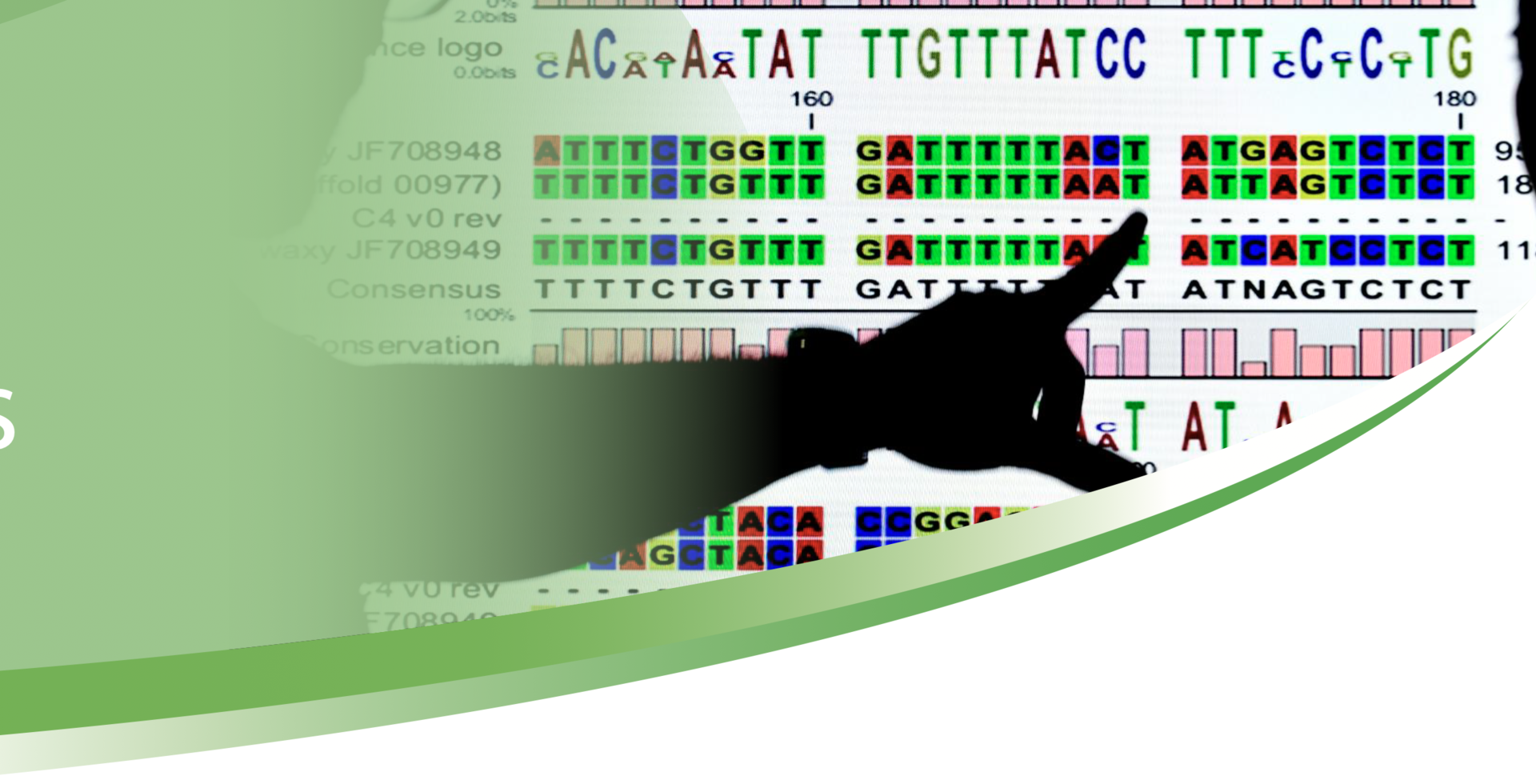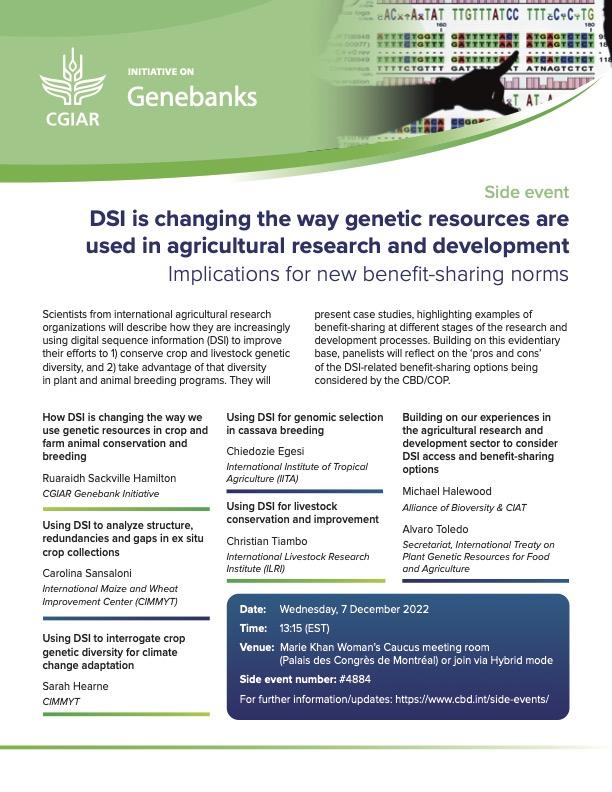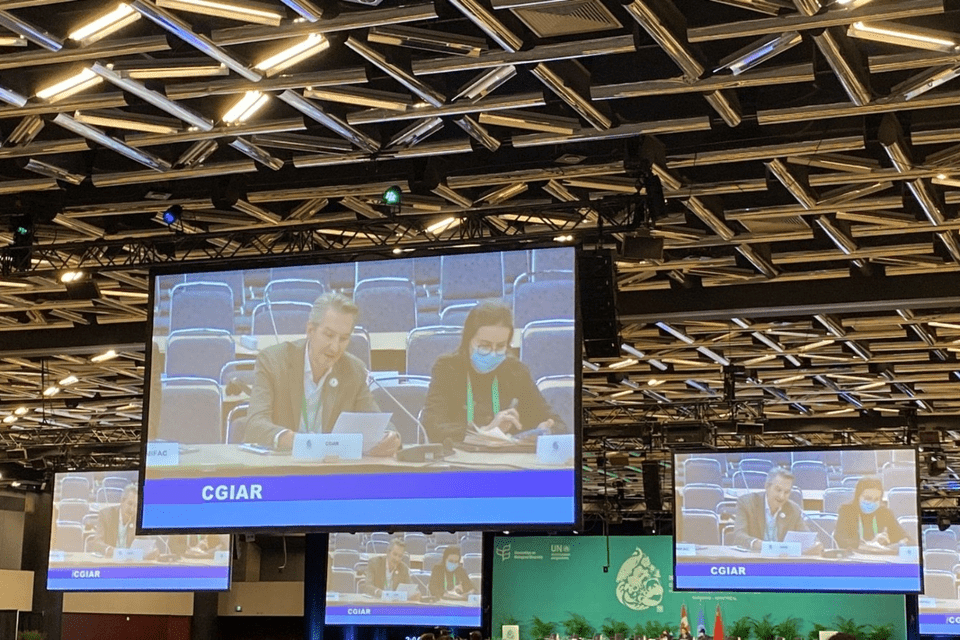Blog Reporting from COP15: Digital sequence information will influence who benefits from biodiversity

Montreal: In the early hours of December 19, after years of negotiations, delegates from 190 countries finally reached a deal to share benefits from the use of digital sequence information (DSI) derived from genetic resources. Read why this matters for the future of our food and agriculture, and what’s next.
By: Michael Halewood
The context: How Digital Sequence Information (DSI) changes research and development
DSI - the data derived from genetic resources – is transforming agricultural research and development by facilitating comparative analysis of genetic variation across an unprecedented diversity of genetic resources for food and agriculture. Coupled with phenotypic data, DSI is allowing us to gain knowledge about functional variation within and across genomes at exponentially accelerating rates.
This new knowledge makes it possible to precisely define the genetic sequences we can use for climate change adaptation, enhanced nutritional content, conservation, and more.
DSI can make positive contributions to all three objectives of the Convention for Biological Diversity (CBD):
· the conservation of biological diversity,
· the sustainable use of its components, and
· the fair and equitable sharing of the benefits arising out of the utilization of genetic resources.
Unfortunately, technological breakthroughs often widen the scientific capacity gap between developed and developing countries – something that cannot be allowed to happen with DSI.
A big decision to share benefits around biodiversity – including digitally
The Convention on Biological Diversity (CBD) creates a framework for cooperation and coordination between stakeholders conserving and using genetic resources. The negotiations leading up to COP15 provided opportunities to promote access and benefit sharing, and to create incentives and support for meaningful capacity strengthening and technology transfer for developing countries, Indigenous Peoples and local communities, including farmers.
In the conference’s final days, delegates agreed to
“to establish, as part of the post-2020 global biodiversity framework, a multilateral mechanism for benefit-sharing from the use of digital sequence information on genetic resources, including a global fund”.
This decision is big for two reasons:
- It recognizes, for the first time in an international agreement, that there should be an equitable redistribution and sharing of benefits, worldwide, from commercial benefits derived from the use of DSI. Up until now, all international agreements have focused on sharing benefits derived from the use of material genetic resources. This decision now extends to sharing benefits from use of DSI derived from those material genetic resources.
- The mechanism created is ‘multilateral’. Until now, the Convention on Bio has promoted bilateral deal-making between individual providers and recipients of genetic materials as the means to share benefits. The stress on multilateralism in this decision reflects all delegates’ appreciation that the easy reproducibility and global distribution of DSI requires another, broader approach to benefit sharing, if it is to be both effective and equitable.
While this really is a big decision, it does not cover all the necessary ground. COP15 did not have the time, or the political will, to make decisions about who will have to make payments through the global mechanism, and under what conditions, and how the money will be distributed. So it has launched a process to negotiate those critical outstanding issues through 2025.
CGIAR has been actively engaged in the international negotiations to get this far, and it will continue to provide scientific information – drawing on its expertise and experience in agricultural research and development – to provide negotiators with an evidence base for making informed policy decisions over the next two years.

Alliance principal scientist Michael Halewood speaks on DSI and benefit sharing at COP15. Credit: G.Patarnello
CGIAR provides scientific evidence to inform benefit sharing policies
CGIAR has been contributing scientific evidence for delegates to consider when developing access and benefit sharing policies.
We released the discussion paper: “Digital Sequence Information is changing the way genetic resources are used in agriculture research and development: implications for new benefit sharing norms” to share insights from examples DSI embedded in CGIAR research and development partnerships.
At a side event we hosted for COP15 delegates, we underscored key messages from the perspective of public international agricultural research and development organizations. A new landscape for benefit sharing has been created with the two-step process inherent in the use of DSI in crop and animal improvement programs: The first step involves developing research tools to analyze and interrogate genetic diversity. The development of these tools requires the use of a wide range of genetic resources. Most of the resources accessed and used in the first step are not used in the second step, which is characterized by applying the tools (developed in the first step) to create commercial products.
In many ways, agricultural researchers have already been operating in a de facto multilateral system for DSI. Digital infrastructures already facilitate pooling and open access to a lot of DSI from genetic resources that are treated as public goods. And agricultural research and development organizations are already generating and openly sharing a wide range of non-monetary benefits derived from the use of that DSI. These non-monetary benefits include improved lines, varieties & breeds, value-added information about genetic resources in public collections, and information about genetic traits that are useful for adapting to climate change.

Speakers at the CGIAR-hosted side event came from the Alliance, CIMMYT, IITA, ILRI, the Genebank Initiative, and the Plant Treaty Secretariat.
What’s missing: policy needs to address monetary benefits
What is missing from this de facto multilateral scenario, however, is monetary benefit sharing. This is largely due to the fact that DSI makes it possible to take commercial advantage of genetic resources, without needing to access and use them in ways that would trigger benefit sharing under the CBD, Nagoya Protocol and the Plant Treaty.
Clearly, policy reforms are necessary to catch up to scientific developments in this field.
Imposition of bilateral forms of access and benefit sharing at this point would have disastrous consequences for agricultural research and development. Instead, a multilateral approach to sharing benefits from the use of DSI would be the most practical, reflective of reality, and equitable since they could (and should) recognize the contribution of multiple countries and institutions to tools development, and not only the countries of origin of the genetic resources that are eventually integrated in products at the end of the research and development chain.
This is why the decision at the finale of the CBD COP to develop a multilateral mechanism for sharing benefits from DSI is so significant.
That said, the decision lacks details, and the system needs a lot more work. There are many ways to construct multilateral mechanisms. It makes sense to develop a multilateral system that is as broad, flat, and inclusive as possible, with minimal exceptions, and decision points for access providers and users. The multilateral system should preserve and support expansion of the open access digital infrastructure that already exists. It should delink access and benefit sharing. It should also delink benefit sharing from the incorporation/use of DSI in particular commercialized products.
Beyond COP15
The CBD COP is not alone in addressing this issue. The same set of challenges will be addressed by the international community under the framework of the International Treaty on Plant Genetic Resources for Food and Agriculture, between 2023-2025. New benefit sharing norms created under both these international agreements must be mutually supportive. Ideally, from the perspective of users and providers, they should be practically seamless. The Plant Treaty already has a multilateral system of access and benefit sharing for material plant genetic resources for food and agriculture, so it makes sense to use that same architecture for addressing benefit sharing for use of DSI obtained from PGRFA. Ultimately, it is to be hoped that both genetic resources for food and agriculture and related DSI will be subject to harmonized norms (and not being subject to separate sets of rules).
The adoption of a multilateral benefit sharing mechanism should create legal certainty for organizations that are generating, sharing, and accessing DSI through open access digital architectures. As negotiators under both the CBD and Plant Treaty framework go forward over the next months (and years), they will need to dedicate much more time and effort than they have so far to identify scenarios where legal uncertainty could undermine ability of agricultural research organizations to generate, access and/or share DSI.

